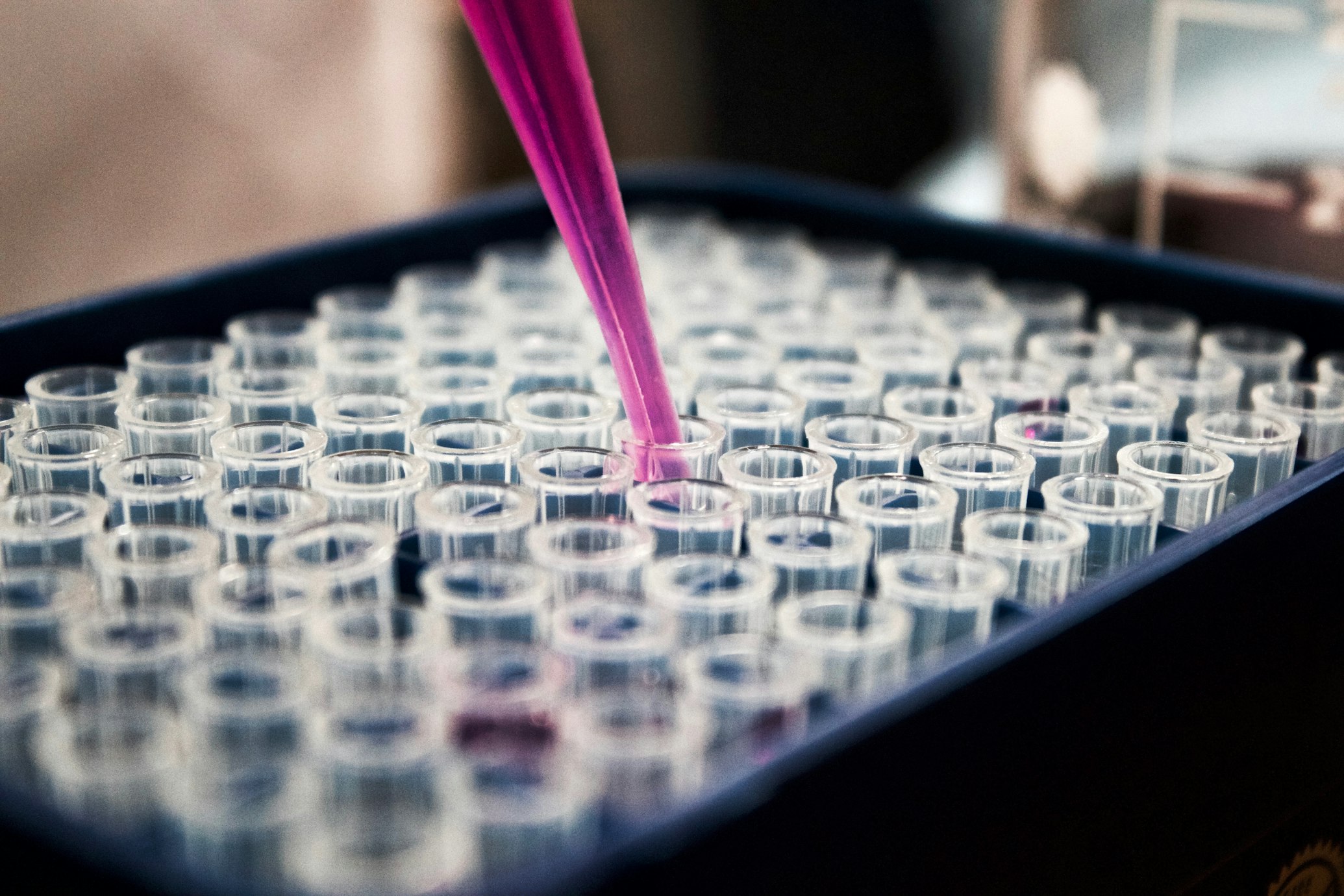Forget magic wands – the real enchanters wield electrodes.
In June 2016, the picturesque town of Pardubice, Czech Republic, became the global hub for these modern-day wizards at the 36th International Conference on Modern Electrochemical Methods (XXXVI MEM). This prestigious gathering wasn't just about abstract equations; it was where scientists unveiled the cutting-edge tools and discoveries shaping everything from ultra-fast phone charging to life-saving medical sensors and the clean energy revolution. Dive into the electrifying world where chemistry meets electricity!

Modern electrochemical research lab (Source: Unsplash)
The Invisible Engine: Why Electrochemistry Matters
Electrochemistry is the science of controlling chemical reactions using electricity, and vice-versa. It's the silent powerhouse behind:
Energy Storage & Conversion
Lithium-ion batteries, hydrogen fuel cells, next-gen supercapacitors.
Sensing & Diagnostics
Glucose monitors, environmental pollution detectors, rapid medical tests.
Materials & Manufacturing
Corrosion protection, electroplating, nanomaterial synthesis.
Sustainable Chemistry
Converting CO2 into useful fuels or chemicals using renewable electricity.
The MEM conference is where researchers unveil how they achieve this control with ever-greater precision, speed, and efficiency using "Modern Electrochemical Methods."
Spotlight on Innovation: Key Themes from MEM XXXVI
While the conference covered vast ground, several electrifying themes dominated:
Nano-Electrochemistry Takes Charge
Scientists reported breakthroughs using tiny electrodes (nanoscale) to study single molecules and reactions happening at speeds previously unimaginable. This unlocks secrets of battery degradation and complex biological processes.
Beyond the Battery: Advanced Energy Solutions
Research focused on pushing battery limits (lithium-sulfur, solid-state) and exploring alternatives like efficient water splitting for hydrogen fuel and capturing/using CO2 electrochemically.
Sensors Get Smarter & Faster
New electrochemical biosensors promised incredibly sensitive and rapid detection of diseases, toxins, and biomarkers, often integrated into portable, low-cost devices.
Computational Chemistry Electrifies the Lab
Presentations highlighted how powerful computer simulations are now used hand-in-hand with experiments to predict new materials, understand complex reaction pathways, and design better electrochemical systems faster.
Deep Dive: Turning Air into Fuel – The CO2 Electroreduction Experiment
One of the most captivating presentations detailed a cutting-edge experiment tackling climate change: Electrocatalytic Conversion of CO2 to Ethylene using Copper Nanocubes.
Experimental Overview
Goal: Transform waste CO2 into ethylene (C₂H₄) using electricity and water
Key Innovation: Copper nanocubes with specific crystal facets
Significance: Potential solution for carbon capture and sustainable chemical production
Challenge: Competing hydrogen evolution reaction (HER)
Methodology
- Catalyst Fabrication: Synthesized uniform copper nanocubes (Cu NCs)
- Electrode Preparation: Deposited Cu NCs on carbon paper
- Cell Setup: Gas-tight electrochemical cell with CO2 bubbling
- Voltage Application: Controlled negative voltage (-0.6V to -1.0V vs RHE)
- Reaction: Multi-step CO2 reduction to ethylene
- Analysis: Gas chromatography and NMR for product quantification

Electrochemical cell setup for CO2 reduction (Source: Unsplash)
Results and Analysis
The key finding was that the specific shape and crystal structure (facets) of the copper nanocubes dramatically boosted the efficiency and selectivity for producing ethylene over other possible CO2 reduction products or hydrogen gas.
| Product | Flat Copper Foil (%) | Copper Nanocubes (Cu NCs) (%) | Significance |
|---|---|---|---|
| Ethylene (C₂H₄) | 15-25% | 40-55% | Major Desired Product - Significantly Increased |
| Methane (CH₄) | 5-10% | < 5% | Undesired - Reduced |
| Carbon Monoxide (CO) | 20-30% | 15-25% | Intermediate/Undesired - Slightly Reduced |
| Hydrogen (H₂) | 40-60% | 20-35% | Major Competing Product - Significantly Reduced |
| Metric | Cu NCs Performance | Significance |
|---|---|---|
| Faradaic Efficiency (FE) for C₂H₄ | 45-52% (at -0.8V vs. RHE) | Percentage of electrons used only for C₂H₄ production. Crucial for process viability. >50% is excellent. |
| Partial Current Density (j) for C₂H₄ | ~15 mA/cm² (at -0.8V vs. RHE) | Measures how fast ethylene is produced per electrode area. Needs to be high for industrial use. |
| Stability | > 10 hours operation | Catalyst maintained >80% initial FE for C₂H₄. Indicates reasonable durability. |
| Item | Function in CO2 Reduction Experiment |
|---|---|
| Copper Nanocubes (Cu NCs) | Catalyst: Speeds up the reaction & steers it towards ethylene. Shape is critical. |
| Carbon Paper Substrate | Electrode Support: Provides conductive, porous base for catalyst. |
| Potassium Bicarbonate (KHCO₃) | Electrolyte: Provides ions for conductivity & CO2/H⁺ source. Buffers pH. |
| Carbon Dioxide (CO2) Gas | Reactant: The raw material to be converted. |
Why This Matters
This experiment demonstrated a significant leap towards practical "carbon capture and utilization" (CCU). By designing catalysts at the nanoscale with specific shapes, scientists can selectively produce valuable chemicals like ethylene directly from CO2 waste using renewable electricity. This tackles greenhouse gas emissions and provides sustainable feedstocks for industry.
The Electrochemical Arsenal: Tools of the Trade
Modern electrochemistry relies on sophisticated techniques beyond simple voltage application:
Cyclic Voltammetry (CV)
Scans voltage to reveal reaction mechanisms and rates.
Electrochemical Impedance Spectroscopy (EIS)
Measures resistance to electron/ion flow, crucial for battery and corrosion studies.
Scanning Electrochemical Microscopy (SECM)
Creates ultra-high resolution maps of chemical activity at surfaces.
Spectroelectrochemistry
Combines electrochemistry with light-based techniques (IR, Raman, UV-Vis) to identify reaction intermediates in real-time.

Modern electrochemical instruments (Source: Unsplash)
Conclusion: The Current Flows Towards Tomorrow
The 36th Modern Electrochemical Methods conference wasn't just an academic meeting; it was a vibrant showcase of science actively building a better future. From the intricate dance of molecules on copper nanocubes converting CO2 to fuel, to the development of lightning-fast sensors and next-generation batteries, the innovations presented in Pardubice highlighted electrochemistry's central role in solving global challenges. The sparks flying in those Czech labs weren't just electrical – they were sparks of ingenuity, lighting the path towards cleaner energy, advanced medicine, and sustainable technologies that will power the decades to come. The field is truly charged with potential.

The future powered by electrochemical innovations (Source: Unsplash)